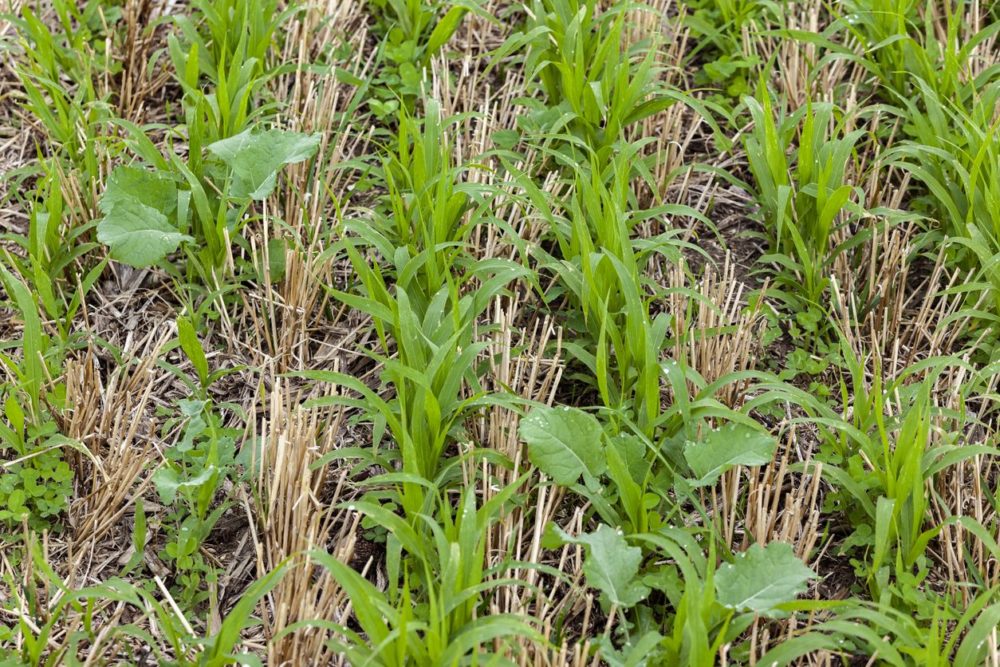“We must reverse agriculture’s trajectory. Policy shaped our current situation, and policy can change it.”
So says a new report from US-based nonprofit the Natural Resources Defense Council (NRDC) that examines the role regenerative agriculture can play in transitioning the wider US agricultural sector into a climate solution rather than a major contributor to climate threats.
To make that a reality, federal policy “must invest in regenerative agriculture, diversify food systems infrastructure, support farmers and ranchers, and fund regenerative research and extension,” the report continues.
Currently the agricultural sector is trapped in something of a vicious cycle: farmers are often first to feel the impacts of climate change in the form of extreme temperatures, fires, floods, droughts, and other issues. Yet industrial agriculture is a major contributor to climate change, accounting for about 10.5% of all greenhouse gas emissions in the US.
Industrial ag by the numbers
NRDC interviewed more than 100 US farmers for the report and surfaced the following findings about the current state of industrial agriculture in the US:
- Just four agribusinesses control most of the seeds and fertilizers farmers can purchase.
- Only four companies control more than 80% of the country’s beef processing, 70% of the country’s pork processing, and 60% of sheep and lamb processing
- Four companies control more than half of the US poultry market, and these companies also dictate “how farmers must raise their animals, which stifles innovation.”
How regen ag can help
Broadly speaking, regenerative agriculture is “a land management philosophy whereby farmers and ranchers grow food and fiber in harmony with nature and their communities,” according to NRDC.
NRDC’s report makes a point of noting that there is no one-size-fits all definition of regen ag, and that current definitions “do not embody the way farmers and ranchers described regenerative agriculture to us.”
That said, some common aspects of regenerative agriculture include prioritizing soil health via cover cropping, crop rotation, no-till farming, and other practices; reducing reliance on fossil-fuel inputs; nurturing relationships within a farming ecosystem; and nurturing the surrounding communities and their economies.
Key policy recommendations
Transitioning away from industrial farming’s “get big or get out” mentality will require substantial change at the federal policy level. NRDC’s policy recommendations tackle four key areas:
Level the federal investment playing field and incentivize regenerative stewardship. That means reforming the policies that made industrial agriculture what it is today. Some of NRDC’s recommendations include reforming the federal crop insurance program, creating more risk management options to deal with loss and disaster, increasing baseline funding for farm bill conservation programs and increasing support for the conservation reserve program.
Invest in more decentralized and diverse food systems infrastructure. Policy must help to build infrastructure that creates more opportunity for regenerative growers, such as more local, dedicated food production or regenerative meat processing facilities.
Support regenerative farmers and ranchers. It’s no small feat to transition to regen ag. Policy needs to support farmers and ranchers financially during their early years of transitioning. In particular, we need more support for BIPOC growers to access federal programs and more support for socially disadvantaged and beginner farmers.
Fund regenerative agriculture research and extension. Technical resources offered by public research institutions need to improve to meet the needs of regenerative farmers, and there must be “consistent, stable, and adequate funding” for conservation districts so that they can supply more technical support to growers.
Needless to say, reversing the trends that turned agriculture into what it is today will take years, and require major shifts for policy, public dollars, and consumer buying choices alike. As NRDC concludes, “This report’s policy recommendations are only the beginning of the transition.”




